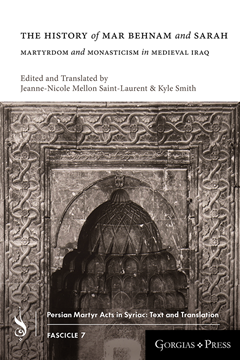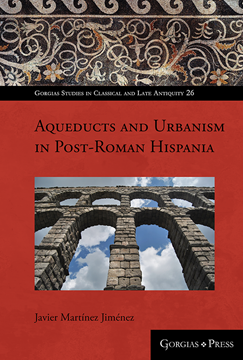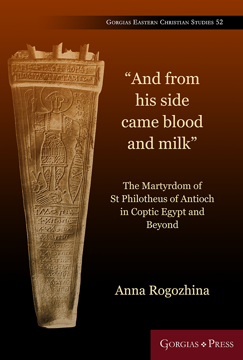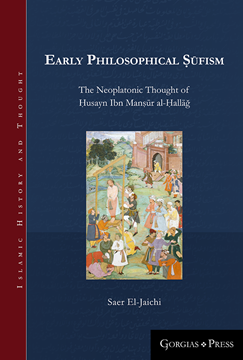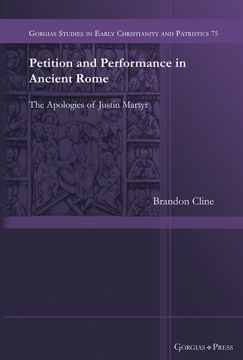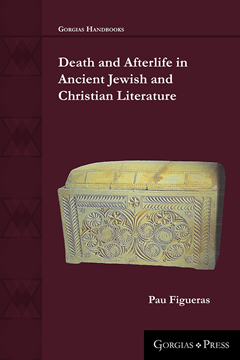The History of Mar Behnam and Sarah
Martyrdom and Monasticism in Medieval Iraq
Edited and Translated by Jeanne-Nicole Mellon Saint-Laurent & Kyle Smith
ISBN: 978-1-4632-3914-5
The History of Mar Behnam and Sarah tells the story of two siblings who convert to Christianity under the tutelage of Mar Mattai, a monastic leader and wonderworker from the Roman Empire. In this volume, Jeanne-Nicole Mellon Saint-Laurent and Kyle Smith provide the first critical edition and English translation of this fascinating martyrdom narrative.
$69.00 (USD)
Aqueducts and Urbanism in Post-Roman Hispania
ISBN: 978-1-4632-3915-2
Our current knowledge of Roman aqueducts across the Empire is patchy and uneven. Even if the development of “aqueduct studies” (where engineering, archaeology, architecture, hydraulics, and other disciplines converge) in recent years has improved this situation, one of the aspects which has been generally left aside is the chronology of their late antique phases and of their abandonment. In the Iberian peninsula, there is to date, no general overview of the Roman aqueducts, and all the available information is distributed across various publications, which as expected, hardly mention the late phases. This publication tackles this issue by analysing and reassessing the available evidence for the late phases of the Hispanic aqueducts by looking at a wide range of sources of information, many times derived from the recent interest shown by archaeologists and researchers on late antique urbanism.
$114.95 (USD)
"And from his side came blood and milk"
The Martyrdom of St Philotheus of Antioch in Coptic Egypt and Beyond
Series: Gorgias Eastern Christian Studies 52
ISBN: 978-1-4632-3916-9
This book examines the function and development of the cult of saints in Coptic Egypt, focusing primarily on the material provided by the texts forming the Coptic hagiographical tradition of the early Christian martyr Philotheus of Antioch, and more specifically, the Martyrdom of St Philotheus of Antioch (Pierpont Morgan M583). This Martyrdom is a reflection of a once flourishing cult which is attested in Egypt by rich textual and material evidence. This text enjoyed great popularity not only in Egypt, but also in other countries of the Christian East, since his dossier includes texts in Coptic, Georgian, Ethiopic, and Arabic.
$114.95 (USD)
Early Philosophical Ṣūfism
The Neoplatonic Thought of Ḥusayn Ibn Manṣūr al-Ḥallāğ
Series: Islamic History and Thought 8
ISBN: 978-1-4632-3917-6
This study challenges the conventional image of the tenth-century Sufi mystic Al-Husayn Ibn Manṣūr al-Ḥallāğ (d. 929) as an anti-philosophical mystic. Unlike the predominantly theological or text-historical studies which constitute much of the scholarly literature on Ḥallāğ, this study is completely philosophical in nature, placing Ḥallāğ within the tradition of Graeco-Arabic philosophy and emphasizing, in a positive light, his continuity with the pagan Neoplatonism of Plotinus and Proclus.
$141.00 (USD)
Petition and Performance in Ancient Rome
The Apologies of Justin Martyr
ISBN: 978-1-4632-3918-3
The system of petition and response was part and parcel of life in the Roman Empire. This book contextualizes Justin Martyr’s Apologies within this system of petition and response, arguing that Justin, in a fertile moment in the history of administrative practice, took a well-scripted form of imperial supplication and public display and boldly transformed it into a uniquely stylized statement of voiced injustice and Christian transparency. Using the heuristic of performance, this book not only compares the Apologies to extant petitions but draws attention to Justin’s strategies of elaboration and to the qualities of his work as a staged enactment within wider political, social, and literary contexts. The result is a reading of the Apologies as an opportunistic combination of petitionary, apologetic, and protreptic discourses by which Justin sought to address both his procedural objections to Christian trials and the popular and philosophical prejudices of his learned contemporaries.
$114.95 (USD)
Death and Afterlife in Ancient Jewish and Christian Literature
By Pau Figueras
Series: Gorgias Handbooks 41
ISBN: 978-1-4632-3919-0
This handbook explores beliefs of ancient Jews and Christians surrounding death and the afterlife through the lens of texts ranging from the Old Testament and New Testament, to Second Temple period and rabbinic literature, to early Christian writings. Figueras further brings together eschatological texts from Iran, Egypt, Greece, and Rome as comparanda, and provides context and bibliography to guide readers in their study of ancient Jewish and Christian views of death and the afterlife.
$78.65 (USD)
